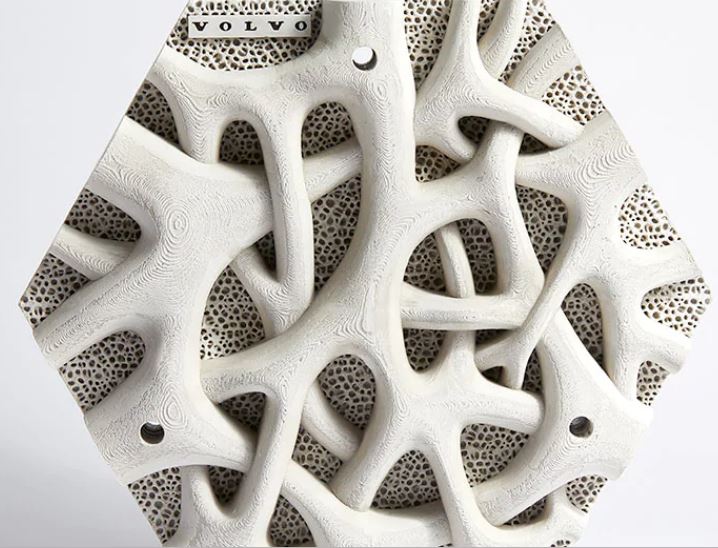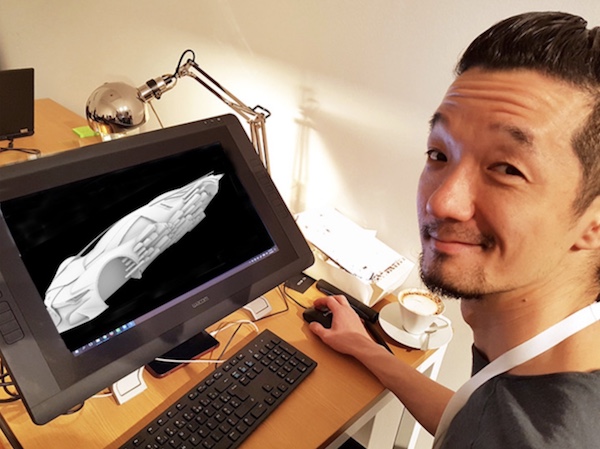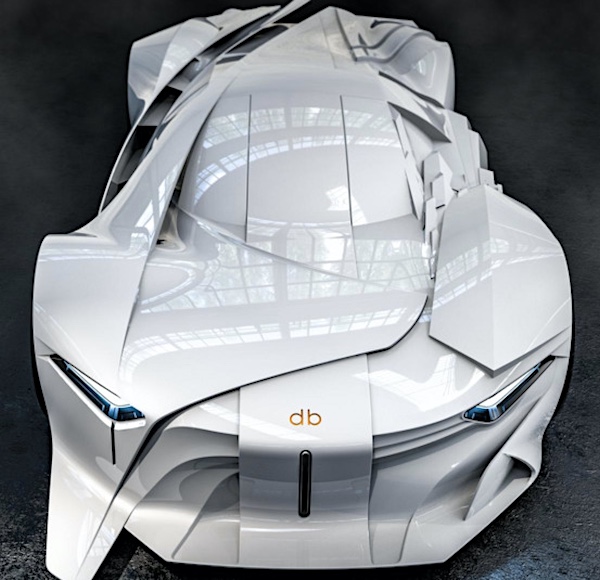Automotive fairs have started around the world and we were keen to discover what is currently happening in the world of car manufacturers. You might be speechless…
Volvo
Volvo has recently installed a 3D printed Living Seawall in the Sydney Harbour in order to encourage marine biodiversity. Created in collaboration with the Sydney Institute of Marine Science and Reef Design Lab, the creation of this living seawall is also a way to take up the scientists’ challenge who believe that there’s so much plastic in the ocean that it’s simply not feasible to remove it all.

According to the manufacturer of cars, solving environmental issues requires modern, divergent thinking. Using FDM 3D printing, scientists 3D printed mold using a mixture of cement and recycled plastic. The project draws on biomimicry, where natural systems are simulated, with each hexagonal tile incorporating the interwoven structure of mangrove roots as well as a more complex texture underneath to encourage the growth of microorganisms.
“We’ve lost 50 percent of the world’s mangrove forests, and in their place, we’ve built things like seawalls, which proliferate around Sydney Harbour. Tearing down the seawalls is not viable,” said Nick Connor, Managing Director of Volvo Car Australia. “There’s a Swedish word, omtanke, that means ‘caring’ and ‘consideration.’ I think that really captures what we’re trying to achieve with the Living Seawall, and it sums up Volvo’s approach to sustainability in general. We’re always trying to rethink, reinvent, redesign for the better.”
Ford
Famous manufacturer Ford uses 3D printing to create prototype parts and a wide range of designs. The company had a narrow window of time to bring back to life Gymkhana TEN-star Ken Block’s “Hoonitruck” Ford pickup.
The “Hoonitruck” has the same twin-turbo 3.5-litre V6 EcoBoost engine as the Ford GT, tuned to deliver more than 900 horsepower, and the largest 3D metal-printed part for a working vehicle in automotive history.

“We are fortunate to have access to incredible technology, but this was one project that pushed us – and our computing power – to the absolute limit. The manifold has a complex web‑like structure that couldn’t be made using traditional manufacturing methods. We ended up dissolving the support systems in acid,” said Raphael Koch, engineer, Advanced Materials and Processes, Ford of Europe.
3D printing, or additive manufacturing, is a tool-less production method that offers design flexibility to help reduce weight and improve performance.
“I think Ford did an exceptional job. This is my favourite part of the ‘Hoonitruck’. You could not have made it any other way,” said Block.
Ford has claimed the record for the largest 3D-printed metal part for a working vehicle in automotive history and has even received awards from the Automotive Division of the Society of Plastics Engineers for 3D-printed parts that went into Ford Ranger and Mustang vehicles. Is it really fair?
The last creation of the designer of Citroen GT
Acknowledged car designer Takumi Yamamoto has teamed with French studio Marie 3D to produce the world’s first 3D printed, full-scale concept car in tribute to David Bowie.

To those to whom the name means nothing, David Bowie was a leading figure in the music industry and is considered one of the most influential musicians of the 20th century. As for Takumi, he is the designer of the GT by Citroen and a former leading designer at the PSA Peugeot Advanced Design Studio.
The DB Project car has been 3D printed on Marie 3D’s Massivit 1800 large format 3D printer. “The design incorporates a core body that represents and ‘protects’ the inner Bowie while the intricate, outer body is designed with different looks from various perspectives in homage to the singer’s chameleon-like personality. Crystals were chosen to reflect the purity of Bowie’s lyrical and musical message.”

“It’s the first time in our 34-year history that we’re exhibiting a full-scale car that has been entirely produced with 3D printing,” said FAI President, Rémi Depoix. “Yamamoto’s concept car demonstrates immense creativity. We were keen to support this project and present the car almost as a piece of art, very much like a sculpture. I am very impressed with this new technology. It opens up new opportunities in terms of creativity and design for the automotive industry.”
The car is currently showcased at this year’s Festival Automobile International (FAI) in Paris, from January 31 to February 3.
For further information, follow us on our social media and subscribe to our newsletter!
Would you like to be featured in the next issue of our digital magazine? Send us an email at contact@3dadept.com





